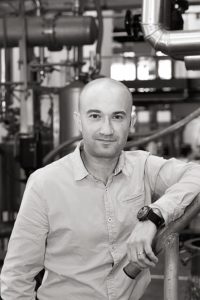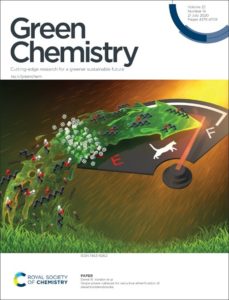|
Submit your research to Francois here Read Francois’s choices for free now: |
Paper
Direct synthesis of a high-density aviation fuel using a polycarbonate
Lulin Wang, Fengan Han, Guangyi Li, Min Zheng, Aiqin Wang, Xiaodong Wang, Tao Zhang, Yu Cong and Ning Li
Green Chem., 2021, Advance Article. DOI: 10.1039/D0GC03426F
Paper
Waste-minimized synthesis of C2 functionalized quinolines exploiting iron-catalysed C–H activation
Francesco Ferlin, Agnese Zangarelli, Simone Lilli, Stefano Santoro and Luigi Vaccaro
Green Chem., 2021, Advance Article. DOI: 10.1039/D0GC03351K
Paper
Direct dimethyl carbonate synthesis from CO2 and methanol catalyzed by CeO2 and assisted by 2-cyanopyridine: a cradle-to-gate greenhouse gas emission study
Hajime Ohno, Mahdi Ikhlayel, Masazumi Tamura, Kenji Nakao, Kimihito Suzuki, Kentaro Morita, Yuzuru Kato, Keiichi Tomishige and Yasuhiro Fukushima
Green Chem., 2021, Advance Article. DOI: 10.1039/D0GC03349A
Paper
One-step lignocellulose depolymerization and saccharification to high sugar yield and less condensed isolated lgnin
Sunitha Sadula, Natalia Rodriguez Quiroz, Abhay Athaley, Elvis Osamudiamhen Ebikade, Marianthi Ierapetritou, Dionisios G. Vlachos and Basudeb Saha
Green Chem., 2021, Advance Article. DOI: 10.1039/D0GC04119J
Paper
Direct Diels–Alder reactions of furfural derivatives with maleimides
Răzvan C. Cioc, Martin Lutz, Evgeny A. Pidko, Marc Crockatt, Jan C. van der Waal and Pieter C. A. Bruijnincx
Green Chem., 2021, Advance Article. DOI: 10.1039/D0GC03558K
We hope you enjoy reading the articles.

















